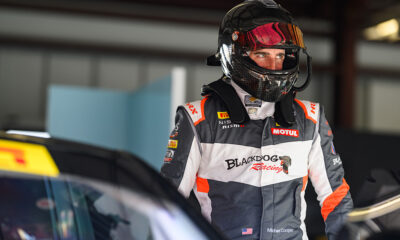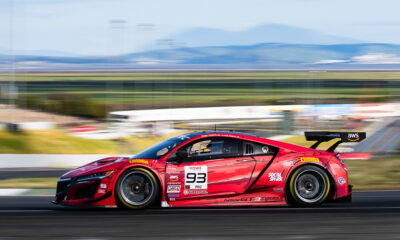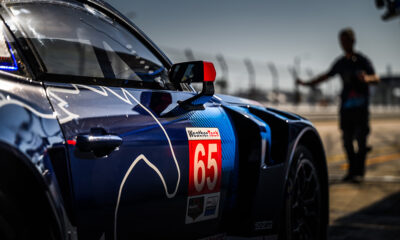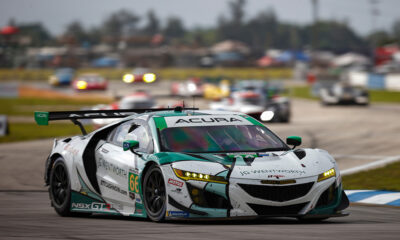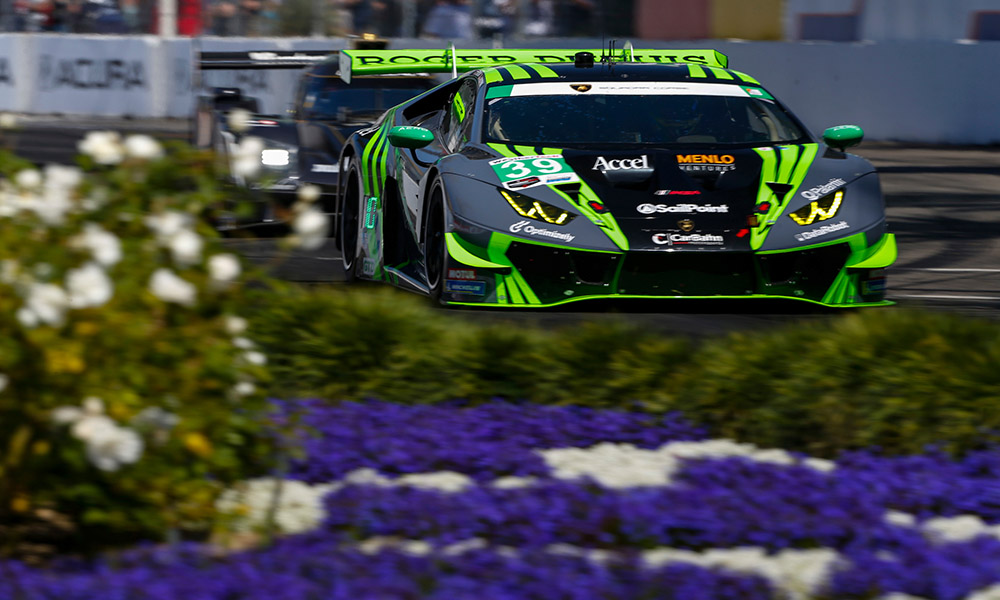
Photo: Jake Galstad/IMSA
Long Beach means a few things to me: waterfront, sunshine, warm weather, concrete walls, speed, and internal combustion music bouncing off the buildings.
The start of the ‘west coast swing’ on our calendar is a favorite for me being a California native; there is something special about racing near home, as well as racing on city streets.
Street circuits are ultra high intensity for multiple reasons. They require you to thread the needle within inches of walls on a slippery and ever changing surface, the schedule is usually compressed due to the nature of racing on public roads that have been shut down for a limited time, and generally there is less overall track time to prepare.
With just two practice sessions, and a short qualifying, we had to be ready to race quickly, and that’s not factoring in the inevitable red flag stoppages during the session which is lost time.
Our weekend started off with a small issue from a radiator cooling hose spring clamp coming undone on the new engine, and leaking coolant out after six laps of the circuit.
Unfortunately with high engine temps and air ingested into the cooling system, we were forced to try and burp the cooling system, and refill the car for the remainder of our track time in Practice 1.
The positive side is that in between Sebring and Long Beach, our engineer Steve Dinan had done a bunch of data analysis from the previous race and re-worked the setup of our No. 39 Carbahn with Peregrine Racing Lamborghini Huracan Evo GT3, which meant we were much closer to the target handling and behavior from the car immediately.
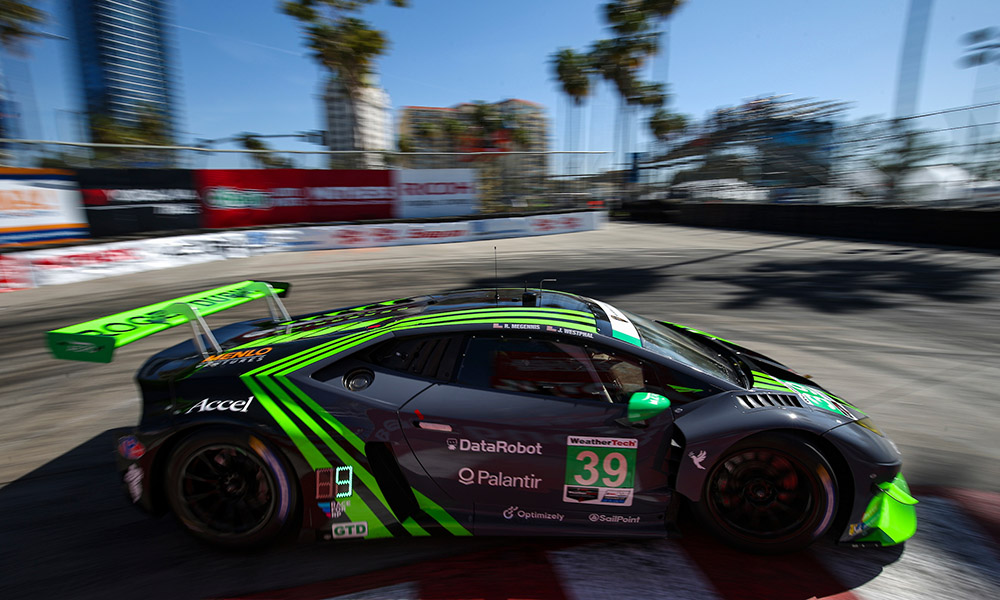
Photo: Jake Galstad/IMSA
Modern GT3 cars make a significant amount of downforce, which is best thought of as how an airplane works, but in reverse. The faster you move, the more pressure the car makes toward the ground.
With that, every millimeter of ride height, or toe, tenth of degree of camber, tire pressure, etc, becomes sensitive to the overall grip and behavior of the car, so inevitably small tweaks or nudges need to be made day of to compensate for weather (air density), surface grip, bump growth, and overall balance of the car.
This meant we had to make the small adjustments, validate them, and get my teammate, Robert Megennis, seat time around a track he has never seen all in Practice 2, a tall order to say the least.
With that said, Robert successfully found a comfortable pace around the track and began learning after I confirmed the changes were acceptable.
Shortly after this session, Robert set out to qualify our No. 39 Lambo. He was able to achieve the fastest time the car had run all weekend in qualifying trim (light fuel and new tires) which validated the direction we were heading in terms of balance and setup.
He secured a starting spot of 11th, which meant we rolled off to the green on the inside of the first corner, a massive advantage on a street circuit with low grip.
With our heads held high, we looked at the race car we had created and a communal ease came over everyone because we felt like the car was finally in the window, a term used to describe the expected handling and performance from the platform as it was intended.
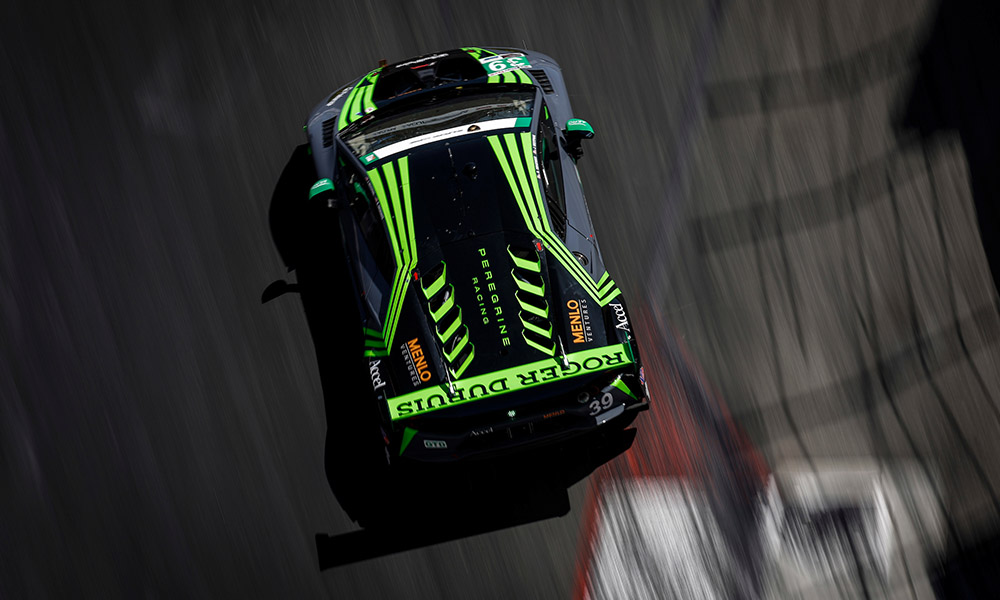
Photo: Mike Levitt/IMSA
The behavior of the car at the limit was progressive, and easy to adjust as well as understand what was coming next.
From my side of the wheel, we finally tied the corner entry/turn in phase behavior to the middle of the corner phase. So I could use the brake release to slide/rotate the car at turn in, and the balance I had just created, or more specifically, the volume of the slide I requested wouldn’t change on it’s own as we slid into the next phase of the corner (apex).
This was BIG, as it allowed us drivers to properly manipulate the angle of the car, in which allows a better exit via an earlier power down/throttle application.
This very detail explained above is the ‘magic’ a good car has, which allows a driver to extract and extra tenth of a second here and there, and at some tracks, can seemingly be worth 1 second per lap.
I will also add, this behavior from the car is almost impossible to see on TV, even with a trained eye. Imagine the corner ahead takes 100 percent of anyone’s ‘effort’ to execute, yet when the car is dialed in or in the window, that corner up ahead will only take 90 percent effort to execute because the car is almost willing to follow your request so well, you don’t have to work as hard.
It’s something that is rare, yet special when you have a car ‘carving’ as we refer to it at Carbahn with Peregrine Racing.
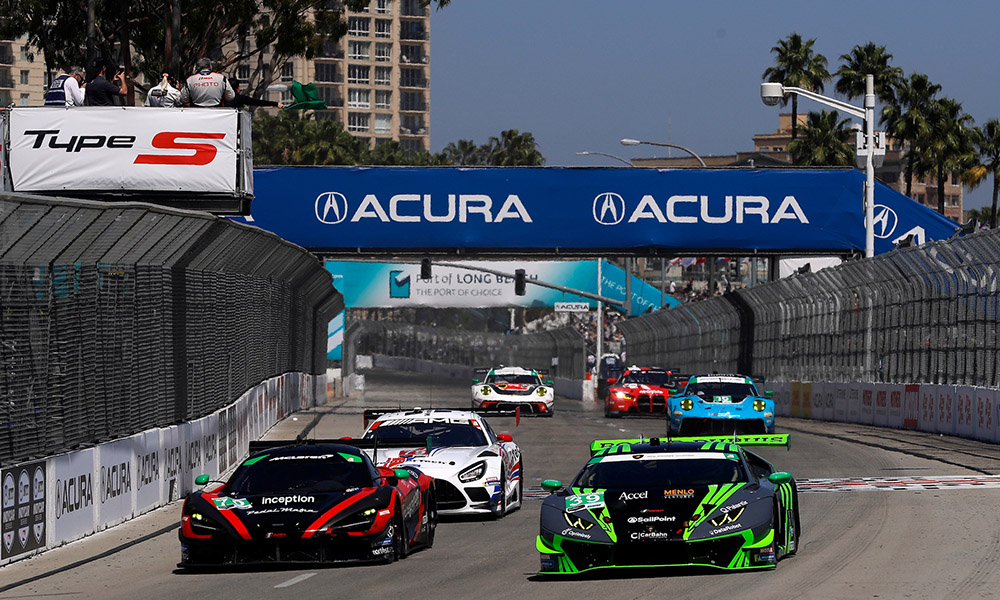
Photo: Phil Abbott/IMSA
During the race Robert and I carved our way up to P5, and I was battling for fourth with 15 minutes to go, when we drove two-wide through Turn 9. Being on the outside bit me hard as you’d expect at a street circuit, even though I was a nose ahead.
I expected less grip so I over slowed the corner by 10 mph more or less, yet the front tires were fighting for grip on the fickle and dusty street circuit, so I had a numb understeer all the way toward the wall.
The left side of the car slid slowly to wall and bounced off in a graze, but it was enough to damage our left rear alignment and toe arm.
Basically the left rear was VERY crooked post contact, and the next time down the front straight I had a massive speed wobble in 4th gear or higher (100 mph+). It was at this moment we made the call to retire the car and not risk further damage.
Even though the race was under yellow when I decided to pit, I did not have a machine to fight with for the remaining minutes.
Needless to say, I am anxiously awaiting redemption at our next race, Laguna Seca. For my team mate, my crew, and engineers who all worked so hard to send this No. 39 the right direction.
We will be back, flying higher #PeregrineRacing



















